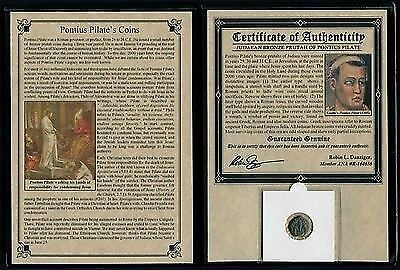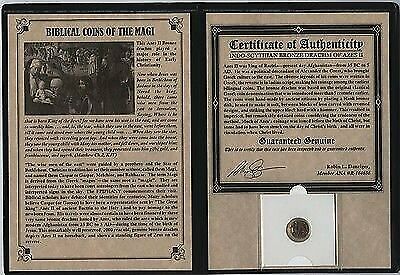-40%
Ancient Celtic tetradrachm.lot 278
$ 343.2
- Description
- Size Guide
Description
Ancient Celtic tetradrachm.lot 278. Shipped with USPS First Class package insured and with tracking info.Very attractive tetradrachm in very fine condition.Very hard to find in this condition.
All our coins and artifacts are certified with certification number.We're guaranteeing authenticity of all our artifacts and coins.
Celtic, Eastern Europe.Danubian tribes. II century BC. AR Tetradrachm.Imitating Philip II of Macedonia. Laureate head of Zeus.
Weight:11.77 gm
Diameter:21 mm
Very fine condition.
The existence of the Celts was first documented in the seventh or eighth century B.C. The Roman Empire, which ruled much of southern Europe at that time, referred to the Celts as “Galli,” meaning barbarians.
The Celts are a collection of Indo-European people in parts
of Europe and Anatolia identified by their use of the Celtic languages and other cultural similarities. Historic Celtic groups included the Gauls, Celtiberians, Gallaecians, Galatians, Britons, Gaels, and their offshoots. The relationship between ethnicity, language and culture in the Celtic world is unclear and controversial. In particular, there is dispute over the ways in which the Iron Age inhabitants of Britain and Ireland should be regarded as Celts.
The mid-fourth century B.C. saw the flow of the Celtic incursions down the Danube River. The pressure of the advancing Celts caused the Thracian Triballi to push on to the Macedonian frontiers. Alexander the Great, just crowned king in the spring of 335 yr. crossed the Haemus Mountains and the Danube, pursuing and finally defeating the Triballi. The Celts, impressed by the young ruler, sent a delegation to swear allegiance to him. The oath they swore to Alexander was still used by the Irish Celts same 1000 years later: ' 'We will keep faith unless the sky fall and crush us, or the earth open and swallow us or the sea rise and overwhelm us."
The Celtic tribes of the third century B.C. had established their domain all along the Danube River from its sources down to the Danubian Delta on the Black Sea. Rather than forming a distinct and recognizable over-class, they tended to assimilate and blend with their conquered foes. The eastern Danubian Celts would copy the primary coin of the region that they controlled. The Larissa drachm with facing bust of Larissa and standing horse reverse was copied north of Thessaly. The coinage of Philip and Alexander was a popular design used especially north of Macedonia. The Celtic kingdom of Tylis copied Alexander tetradrachms and drachms for two generations, from 275 to 225 B.C.2 Along the coast of the Black Sea, the Thasos tetradrachm was subject to Celtic copies. Most of these coins were copied in silver.
Celtic power and influence were strong in Thrace and Dacia during the second and first centuries B.C.Celts served as mercenaries on both sides of the struggles between the Macedonian kings. during the Mithradatic Wars, and later against Rome in the Macedonian Wars.
The nature of Celtic coinage is imitative, copying the coins of the nearby region.The bronze and potin coinage of the first century B.C. in Gaul has been extensively researched. But little work has been published on the small change markets of the eastern Danubian region during the second and first centuries B.C.
A series of coins was struck in the Serdi region of Moesia, ranging from the Danube down to the Macedonian border all along the rivers Oeseus and Strymon to the western part of the Haemus Mountains, an area which is now western Bulgaria. This coin type, in the Celtic tradition, was copied after the rare Konion Macedonian issue struck after 187 B.C. The Macedonian bronze coin has an obverse showing the head of the river-god Strymon right, wreathed in corn. The reverse has a trident with dolphins between the prongs. The choice of this issue is appropriate to the Celts as the river Strymon runs through the Serdi region. These coins were certainly official Celtic issues due to the various over-strikes found on coins of Pella, Thessalonica and Amphipolis, all struck after 187 B.C. This obviously dates the Serdi Celtic copies to after 187 B.C.
Certificate of Authentucity provided.




















